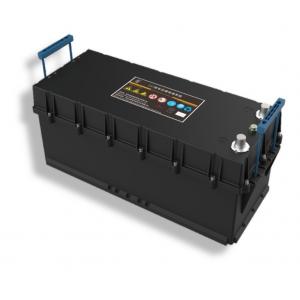

Add to Cart
High Level 24V 100Ah LiFePo4 Heavy Truck Battery With Dual Purpose
The heavy truck dual purpose lithium-ion battery is the high level products which is launched by Camel to solve the issues of the power supply for both the Starting and electric appliances(air conditioner, audio, cooker, refrigerator, etc.). Comparing with the lead-acid dual purpose battery, the lifespan operation cost of the LiFePo4 battery is much reduced while the battery performance is promoted. And with over 256 tests, the battery is safe enough to guarentee your truck. Choose this battery, you can not only save the overral operation cost, but also greatly improve the driving experience of the truck drivers.
Product Features
Longer Service Life
100% DOD is more than 2000 times, to ensure 5 years’ service life
Over-Discharge Protection
BMS intelligent management keeps 20% of the minimum starting power
to ensure easy start
Fast Recharging
Superior charging acceptance, fast recharging in 2 hours to reach
95% SOC
Light Weight
2/3 lighter than lead-acid battery, more fuel efficient and
environmental friendly
Excellent Cold Cranking Performance
Instant cranking under ultra-low temperature(-40 ℃), no need to
warm up
Strong Vibration Resistance
5G vibration resistance, adaptable for rough road conditions
Online Monitoring
View the battery status online in real time, to check the battery
voltage, temperature, health status.
Strong Power Supply for Electric Appliances
Power supply for electric appliances such as air conditioner during
parking period for 9+ hours, enjoy a more comfortable driving
environment
Product Model
| Type | Voltage (V) | Capacity (Ah) | Dimensions(mm) L*W*H | CCA(-18℃)(A) | Weight(kg) |
| 24V LiSB CCA1000 | 24 | 100 | 541*230*216 | 1000 | ≤30 |
Applications
It is suitable for heavy-duty trucks and high-load vehicles that require strong starting power and low-current cycling service to meet the extended auxiliary power needs of electrical accessories such as air conditioners.
About Camel
Founded in 1980, Camel Group Co., Ltd.(Stock No: SH601311) is
specialized in the R&D, production and sales of lead-acid
batteries, with the production of EV lithium-ion battery and used
battery recycling as the supplement. Camel is the largest and
leading car battery manufacturer in Asia.
Currently, Camel has four major brands, which are CAMEL, HUAZHONG,
SWAN, DF. With over 400 types of products covering automotive
starter battery, start-stop battery, lithium-ion battery, traction
battery, etc. Camel batteries are widely used in cars, trucks,
agricultural vehicles, golf carts, electric vehicles and other
applications.
The core competitiveness of Camel Group stems from continuous
independent innovation, clear development strategy and efficient
execution, which are all based on having an enterprising and
innovative management and technical team. To ensure the
technological leadership in the industry, Camel has continuously
increased R&D investment and introduced the world's leading
automatic production lines, and advanced R&D and testing
devices. The professional R&D institute under the company is
recognized as state-level enterprise technology center. Camel also
has academician expert workstation and state-level laboratory. As a
high-tech enterprise supported by the state, Camel has entered the
field of new energy vehicle prospectively, committed to green
energy manufacturing and recycling, and opening a low-carbon life
for mankind.
FAQ
1. Why is the battery voltage abnormal?
A: After charging, the voltage of each single cell should be around 2.1 V (may be affected by electrolyte density). If the voltage is low during primary usage, check if battery is fully charged or if electrolyte density is too high or too low.
If battery shows comparatively higher voltage during charging, along with numerous bubbles and voltage drops fast during discharge, this may indicate plates sulfation. Fully discharge the battery with low current and then charge the battery with low current (0.1C20), repeat the discharge and charge steps several times. The effect of this method may be affected by the sulfation degree.
2. What is the effect of abnormal electrolyte density and indicator color?
A: During battery charging and discharging processes, electrolyte density should vary from 1.070 to 1.290g/cm3. Density increases during charging and decreases when discharging.
a. If density is too high, it will cause plate sulfation and accelerate grid corrosion; while if density is too low, it will affect discharge capacity.
b. Under normal charging conditions, if the density does not increase significantly or even remain unchanged, there is a possibility of plate’s sulfation, which may need countermeasures to eliminate sulfation.
c. After the battery is charged, if the density decreases significantly during the resting period, it indicates the sever battery self-discharge, which may be caused by too much impurities in electrolyte. If electrolyte shows abnormal color or smell, or even shows turbidity, it indicates that the electrolyte is impure and impurities has got into the battery.
d. If electrolyte shows the color of metal ions, there is a possibility of contamination.
